


Sand is one of nature's basic elements, on land an important factor in the composition of soil, at sea the bed and home of many marine life forms, an ever renewable source of sand. The function of a beach is one of collecting and recycling of debris from land and sea. It forms a flexible and adaptable edge between the land and sea. |
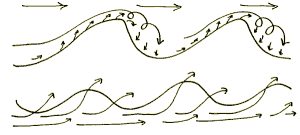
Dunes are shaped by wind in forms resembling waves. Wind speeds up on their crests and sand from the face of the dunes is sucked up into the low pressure space and carried over the dunes. Along a beach, the low pressure made by the aerodynamic features of the dunes often cause the winds to swerve inland and deposit sand on the dunes behind the foredune. |

Between the sandbars and the beach are channels dug by the breaking of the waves. These channels carry alongshore currents stimulated by the angle of wave fronts to the shore. They transfer sand along the shoreline. This system ensures that beaches all along the coast receive supplies of new sand to build with. |
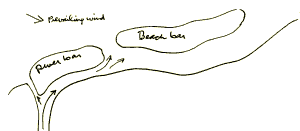
The form of a river bar responds to the prevailing winds and currents. By bending, it diverts sand from the river alongshore onto the beach bar. |
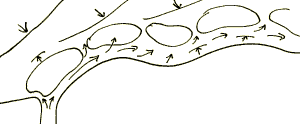
Sand bars are poised between the forces of incoming waves, river current, reflecting waves and undertow from the incline of the shore. |
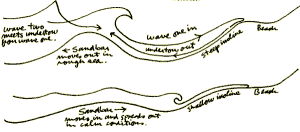
Sand bar when wet is very mobile. In calm weather waves break closer to the shore. They stir up sand from the bottom and move it up onto the beach in watery veils, so the beach front is gradually raised, tide by tide, layer by layer. |
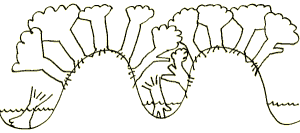
One essential factor in the building and maintenance of a beach is the tree. As the forest grows, it expands. On banks of streams and rivers branches are shed and often whole trees are edged into the water. |

Here they quickly settle into the soft wet sand and gather about their protruding arms the debris of the storm. |
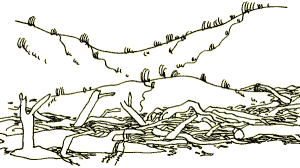
They form a tangled raft before the dunes. This helps protect and feed the plants that grow there. |
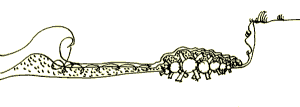
During the storm, sand taken from the beach by the fierce undertow, has assembled on the beach bar. Now large swells generated by the storm break on the bar, stir up its sand and with long powerful strokes sweep it into the driftwood raft. |
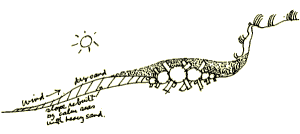
The sun shines, the fine upper layer of the sand dries, the wind blows it along the beach. This sand makes ramps against the driftwood; travels up the ramps and covers the driftwood rafts. Heavier grades of sand remain on the lower beach. |
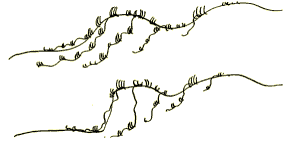
Plants stabilize dunes by bending and flexing with the wind. They trap flying sand and bind the dune with roots. Dune plants are nourished by flotsam and sea spray, which induces them to grow towards the sea. After storms these leaders fall into the cuts made by waves and quickly repair the slope of the beach. |
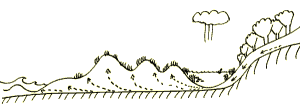
Behind the dunes, marshes and lagoons filter drainage from the land, provide moisture for the dune plants, stabilise the land's water table and provide shelter for many forms of life. This system has served the planet since the first trees fell into the rivers formed by rain that scoured the land for sand. |